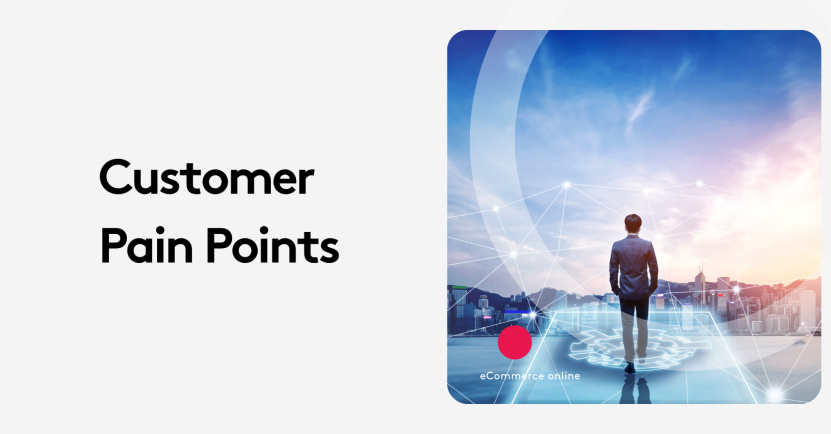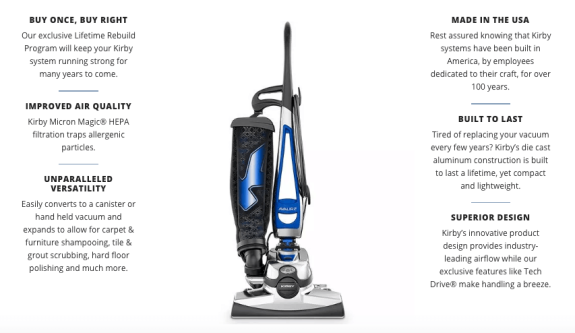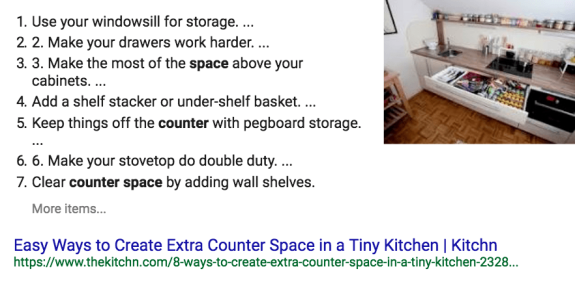The Hidden Truth Behind Customer Pain Points

Customer pain points aren’t always as obvious as they seem, and many businesses fail to spot them. Delving deeper into these challenges can reveal insights that lead to better solutions and stronger customer loyalty.
When we have perceived unmet needs, we usually end up buying products. Those unmet needs are our pain points. As an online store owner, you are your customers’ doctor. Your eCommerce store is the hospital. Your staff are the nurses and orderlies.
Each requires a specialized treatment plan. Likewise, there are as many customer pain points as there are physical ailments, each needing its own form of resolution.
Before you can apply what I am about to share, you will have to have an in-depth understanding of your customer base. Your niche will determine which of their pain points you should be able to solve. Your goal is to hone your specialty by gaining experience through “treating” your customers.
Let’s take a look at the categories of pain points your customers face and explore examples of how you might solve them.
Key takeaways
- Pain points aren’t always obvious: Businesses must look deeper into customer challenges to identify hidden opportunities for solutions and growth.
- Price isn't always key: Selling high-value products requires emphasizing long-term financial benefits rather than competing on low prices alone.
- Convenience drives sales: Solving everyday convenience and productivity issues significantly boosts customer satisfaction and loyalty.
- Optimize the customer journey: Simplifying every stage—from research and website navigation to checkout and delivery—removes barriers, enhancing overall customer experience.
On this page:
What is a customer pain point?
A customer pain point is a specific problem, challenge, or frustration that current or prospective customers are experiencing in their interaction with a product, service, or within a specific marketplace.
These problems can manifest at any stage of a customers journey, from awareness and consideration to purchase and post-purchase experiences, and they represent areas where the customer feels their needs aren't being met.
Understanding customer pain points is crucial part of business. Pain points represent opportunities to improve and innovate.
By identifying and addressing these challenges, companies can develop solutions that not only solve customers' problems but also create competitive advantages in the marketplace.
Pain points can relate to various aspects of the customer experience, including:
- Product functionality - The features that a product has available when compared to other products
- Service delivery - The way that the services is delivered to the customer
- Pricing - How a product or service is priced in relation to how its being consumed
- Support - How the vendor reacts when the customer asks for something to be fixed or explained
- Accessibility - The barriers that inhibit a customer from using a product or service
The above definition is inhibitive of where you can meet your customers on the shopping journey. Simply stating that ‘the point at which a prospect realizes you have a solution’ is their pain point leaves a lot out of the picture. In fact, the point when the shopper realizes that you can provide a solution is only one touch point in their trek through your sales funnel.
The first example provides a simpler yet more complete answer to the question, “what is a pain point?” A customer pain point is a real or perceived problem for which a retail or wholesale brand can provide a solution. It starts with brand discovery and ends with a purchase transaction.
Now, it’s time to study each type of customer pain point to which you can provide a solution.
[Pain point #1] Pain points affecting the financials
In the United States, healthcare is a for-profit practice, so it is easier to assume the correlation between financial pain points and your duties as “the doctor” of your online store. But, in many countries, finances have nothing to do with well-being. So, don’t make the mistake of believing that your job is to provide your products at the lowest cost -- pricing is just one part of your business strategy.
Financial pain points include the problems that consumers face regarding money:
- The high, often unnecessary cost of repeat purchases of everyday items.
- Low life-expectancy of a product that is made to last a significant length of time.
- Subscription plans and membership fees.
If you sell high-ticket products, you are more likely to be able to resolve a financial pain point by emphasizing the significance of long-lasting products. On the contrary, if you sell inexpensive products, you are more likely to position yourself as a hero in consumers’ eyes by comparing your prices (and maybe quality) to those of your competitors. In fact, according to a recent Capterra survey, nearly half (47%) of customers who had a negative customer cite the product not working well or to their expectations as a reason. Therefore, is so important to understand how your product resolves financial pain points. Your niche and your product standards can make a world of difference in the marketing message you should send.
This is how to relieve financial pain points
If you’ve lived in a home with carpeting, you may have experienced a pitch from a Kirby vacuum cleaner salesman; the first time I met one of these guys, I was 19 years old, living in a suburban duplex with a roommate. The bell rang, so I went to the door and was greeted by a charismatic man in a suit with a large, clunky-looking machine, offering to shampoo my carpets “for free.” I let him in, allowed him to do his thing, then listened to his spiel.
Unfortunately for him, it was a no-go! There was no way in the world I was going to finance a $2,500 vacuum cleaner when I had just picked one up at WalMart for $30. I didn’t care how clean my carpets looked because logic told me it would only cost $100 to buy a carpet cleaner if I decided to -- even less if I checked out the right garage sales.
But, guess who owns a Kirby now, 15 years later? That’s right, me. I ended up taking the plunge and spending more because I realized that those broken $30-vacuums (more like $100+ pieces of junk, today) were piling up in landfills and slowly but surely draining my bank -- I had to buy a new one each year. If the first salesman I met had explained how his product could resolve my financial pain point, I may have considered the investment earlier.

The moral of the story is it’s not impossible to sell a penny-pincher an expensive product; you just have to highlight the long-term financial benefits. In the same way, a doctor always advises smokers to quit now so that they might avoid lung disease in the future, when promoting an expensive product, show your customers what how this product will benefit them for years to come.
[Pain point #2] Pain points affecting convenience & productivity
When you have a cold, you know your body’s immune system will fight it off naturally… eventually. But if you have a cold and you have to go to work, a runny nose and constant sneezing might prevent you from meeting deadlines or, at the very least, being comfortable. So, when a bug hits you what do you do?
Some people check the internet for home remedies. Others head to the drug store to pick up medicine. And, there are those that know they need to go to the doctor. Problems that shoppers face regarding convenience and productivity are eventually resolved with physical solutions - products.
Convenience and productivity pain points include the problems shoppers face regarding everyday tasks:
- Lack of productivity.
- Lack of convenience.
- Lack of comfort.
Convenience and productivity pain points hinder the prospect’s ability to perform activities in an optimized way.
This is how to relieve convenience & productivity pain points
I have a family of four and my poky little kitchen isn’t exactly what you would expect for a home with this many people. I don’t have enough space to install a dishwasher without a complete remodel. The dishes that used to pile up in the drainer would take up too much counter space for me to prep food while they were drying; this was my convenience and productivity pain point.
The first step I took in remedying the problem was to do a Google search for “ways to increase counter space in a small kitchen.”

(Easy Ways to Create Extra Counter Space in a Tiny Kitchen | Kitchn)
I learned a few good tips for maximizing my kitchen space and began implementing them. Eventually, after maneuvering farther down the rabbit hole of possible solutions, I discovered an over-the-sink dish drainer for sale online. I bought it and the problem was solved.
Like cold patients, your customers have problems that they face concerning everyday productivity, convenience, and comfort. Your job, as an online store owner, is to show them how to solve the problems that are relevant to your products via eCommerce content marketing.
[Pain point #3] Shopping journey pain points
The shopping journey itself comes with its own set of pain points. It would be negligent not to understand them. They begin at the time when your potential customer realizes they have a problem and end when they are satisfied with the product(s) they receive to solve the problem.
1. Online research pain points
Modern consumers expect to find answers to their questions on authority websites and blogs. From there, it needs to be easy to find the products they’re looking for from anywhere. Implement a search engine optimization strategy customized for your audience, keeping convenience and productivity pain points in mind.
Across all channels, your content should be branded. Someone could see your content 25 times before they ever click through a link, so make sure you’re visible. You can create a branding package for free, in just a few seconds with Hatchful.
Additionally, your products should be available on major marketplaces so they are easy to find. One common step that I see a lot of online stores skip is Google Shopping product submission -- don’t make their mistake.
2. Website navigation pain points
Like all other crossroads on the online shopping journey, website navigation needs to be simple and straightforward. Make sure your site includes a search bar and that it’s easy to navigate to any of your products without thinking too much. A Wordpress page builder can help you take control over your site design, no matter what theme you use. Learn the eCommerce site navigation basics to make sure your user experience is up to par.
Recommended readings:
- The Anatomy of the Perfect eCommerce Site [Infographic]
- eCommerce Web Design: a 36-Point Checklist to Create the Best eCommerce Site
- How to Awesome-ify Your Visual Content
- eCommerce User Experience: How To Fix Your Conversion Issue With These UX Tips
3. Product cost and availability pain points
Shoppers need to know when product inventory is low so that they can avoid having to wait too long to receive their item. And, they need to see how much their order will cost (including shipping and handling) if you expect them to make a purchase. Multi-channel inventory management software will alleviate a lot of the hassle of trying to manage your inventory across multiple sales channels.
Recommended readings:

[Pain point #4] Checkout pain points
Your shopping cart and checkout process should be informative and simple. A complicated checkout process will deter leads away at the last second -- when it’s most important. So, learn how to optimize your shopping cart flow for conversions to see more shoppers make their way through the transaction process.
Recommended readings:
- 4 eCommerce Website Elements You Should Personalize ASAP
- 7 eCommerce Case Studies You Need to Steal From
- 25 Vital eCommerce Metrics Every Online Store Owner Needs to Track
5. Multi-channel shopping pain points
Most customers shop using more than one channel (online marketplaces, branded websites, in-store, etc.) and use more than one device to shop online. Make sure your sales channels are interconnected and use a point of sale card reader that connects to your online store when processing offline transactions.
Recommended readings:
- Multi-Channel Selling: How to 19X Your eCommerce Site Revenue
- Omnichannel eCommerce Marketing Strategies: 8 Ideas to Create the Perfect Customer Journey
- The Amazon Survival Guide: Thriving in the Age of Amazon
6. Tracking and delivery pain points
Your customers want to be informed of the status of their orders as soon as they pay for them. They want to know when a product ships and when they can expect to receive it. Rather than simply send out a tracking number, use smart shipping software to make your job easy and keep your shoppers happy.
Recommended readings:
- Growing and Scaling a Successful eCommerce Business
- Growth Hacking eCommerce: 18 Underrated Hacks to Convert More Visitors
- Reverse Logistics Strategies: How to Turn Returned Items into New Sales
Final thoughts
Whether you’re a primary care provider like Jeff Bezos providing almost any product under the sun or a specialist like Phil Knight who caters primarily to a specific niche, your job as an online store owner is to relieve the pain points of your target market. In doing so, you will become a trusted brand and your chance for success will skyrocket.
Want to see how high-growth eCommerce companies use Core dna’s commerce platform? Let’s chat.













